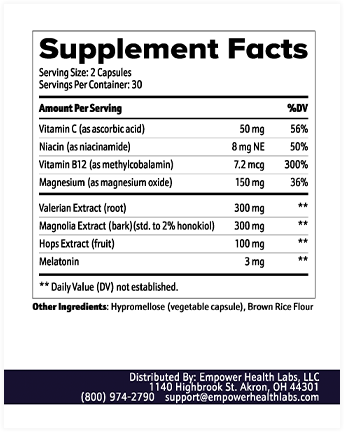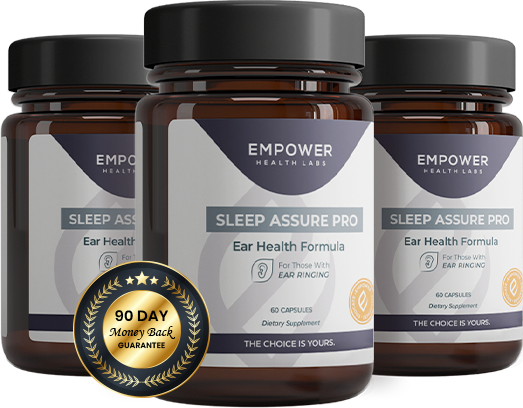

The results of this analysis clearly showed that individuals with short sleep duration (5–6 h) demonstrated the lowest intake of lutein, zeaxanthin, selenium, and vitamin C, as the largest contributor of unique variance. There is a growing body of evidence linking free radical formation and oxidative stress with sleep and sleep-related disorders, and the significant association observed by Grandner et al. may suggest that an antioxidant, vitamin C, is important for sleep health. Our work has led us to the conclusion that supplementation with vitamin C has a contradictory effect on sleep quality and physical activity. By increasing the consumption of this antioxidant, one can potentially help increase sleep duration, reduce sleep disturbances, relieve movement disorders, and decrease the dangerous effects of sleep apnea. https://www.ncbi.nlm.nih.gov/pmc/articles/PMC7767325/
Less Vitamin C intake was associated with non-restorative sleep. Vitamin C, which is found in high concentrations in fruit and vegetables, is an antioxidant (Hermsdorff et al., 2011) which could protect against the development of cardiovascular disease and cancer. https://www.ncbi.nlm.nih.gov/pmc/articles/PMC3866235/
For the first time, we investigated the effects of acute systemic administration of nicotinic acid on sleep in mice. Intraperitoneal and oral gavage administration of nicotinic acid elicited robust increases in non-rapid-eye movement sleep (NREMS) and decreases in body temperature, energy expenditure and food intake. https://www.ncbi.nlm.nih.gov/pmc/articles/PMC6863905/
It is noted that some of the manifestations of prolonged sleep deprivation are similar to changes seen in pellagra. Dermatitis is one of the cardinal clinical manifestations of human pellagra. Prolonged sleep deprivation also typically induces a dermatitis in experimental animals. Both dermatidities are histopathologically similar. It is plausible that both may have a similar etiology, i.e. depletion of nicotonic acid and products derived from it. https://pubmed.ncbi.nlm.nih.gov/1809857/
Reduced intake of vitamin B2 and B3, water, and protein may be associated with tinnitus and tinnitus-related annoyance, and further studies regarding the importance of adequate nutritional intake in the tinnitus management need to be performed. https://pubmed.ncbi.nlm.nih.gov/29433160/
The use of methylcobalamin in the treatment of a variety of sleep-wake disorders is very promising. Although the exact mechanism of action is not yet elucidated, it is possible that methylcobalamin is needed for the synthesis of melatonin, since the biosynthetic formation of melatonin requires the donation of a methyl group. Supplementation appears to have a great deal of ability to modulate melatonin secretion, enhance light-sensitivity, normalize circadian rhythms, and normalize sleep-wake rhythm. https://altmedrev.com/wp-content/uploads/2019/02/v3-6-461.pdf
In conclusion, the serum vitamin B12 results show that the participants with higher vitamin B12 in the second and third tertiles reported better scores on the sleep quality scale and a lower use of sleep medication. https://pubmed.ncbi.nlm.nih.gov/33922970/
This pilot study highlights the significant prevalence of Vitamin B12 deficiency in North Indian population and improvement in tinnitus severity scores and VAS in cobalamin-deficient patients receiving intramuscular Vitamin B12 weekly for 6 weeks further provides a link between cobalamin deficiency and tinnitus thereby suggestive of a therapeutic role of B12 in cobalamin-deficient patients of tinnitus. https://www.ncbi.nlm.nih.gov/pmc/articles/PMC4918681/
Supplementation of magnesium appears to improve subjective measures of insomnia such as ISI score, sleep efficiency, sleep time and sleep onset latency, early morning awakening, and likewise, insomnia objective measures such as concentration of serum renin, melatonin, and serum cortisol, in elderly people. https://www.ncbi.nlm.nih.gov/pmc/articles/PMC3703169/
Mg intake was borderline associated with better sleep quality [highest quartile (Q4) vs. intake quartile (Q1): odds ratio (OR) = 1.23; 95% CI = 0.999, 1.50, ptrend = 0.051]. Participants in Q4 were also less likely to have short sleep (<7 h) compared to those in Q1 (OR = 0.64; 95% CI = 0.51, 0.81, ptrend = 0.012). The observed association with short sleep persisted among participants without depressive disorders (Q4 vs. Q1: OR = 0.64; 95% CI = 0.49, 0.82, ptrend < 0.001). https://pubmed.ncbi.nlm.nih.gov/34883514/
The serum magnesium concentration was significantly lower in the study group compared to the control group (1.8±0.2 vs. 2.3±0.4 mg/dL, p=0.03)…The significant association between serum magnesium level and tinnitus shows the importance of magnesium in the pathophysiology of subjective tinnitus. https://pubmed.ncbi.nlm.nih.gov/27405078/
We confirmed significant differences between valerian and placebo for parameters describing slow-wave sleep. In comparison with the placebo, slow-wave sleep latency was reduced after administration of valerian (21.3 vs. 13.5 min respectively, p<0.05). The SWS percentage of time in bed (TIB) was increased after long-term valerian treatment, in comparison to baseline (9.8 vs. 8.1% respectively, p<0.05). At the same time point, a tendency for shorter subjective sleep latency, as well as a higher correlation coefficient between subjective and objective sleep latencies, were observed under valerian treatment. https://pubmed.ncbi.nlm.nih.gov/10761819/
This study demonstrated that valerian could be a safe and useful herb alone and also in combination in treating sleep problems, anxiety, and associated comorbidities. One possibility for exploration that arises is whether valerian is particularly useful in treating insomnia where there are higher levels of anxiety. In fact, the observation that V. edulis reduced sleep problems most effectively in children with hyperactivity may suggest that valerian is more useful in treating insomnia associated with particular psychiatric conditions such as anxiety. The safety has been proven in a wide range from childhood to old age...Thus, valerian may help improve the quality of life in all ages by improving sleep quality, thereby preventing a number of psychiatric and cognitive dysfunctions. https://www.ncbi.nlm.nih.gov/pmc/articles/PMC7585905/
Valerian significantly improved sleep quality, the symptoms of state anxiety, and depression in HD patients. https://www.ncbi.nlm.nih.gov/pmc/articles/PMC8077445/
Magnolol (6,6',7,12-tetramethoxy-2,2'-dimethyl-1-beta-berbaman, C(18)H(18)O(2)), an active ingredient of the bark of Magnolia officinalis, has been reported to exert potent anti-epileptic effects via the GABA(A) receptor. The receptor also mediates sleep in humans and animals. The aim of this study was to determine whether magnolol could modulate sleep behaviors by recording EEG and electromyogram in mice. The results showed that magnolol administered i.p. at a dose of 5 or 25 mg/kg could significantly shorten the sleep latency, increase the amount of non-rapid eye movement (non-REM, NREM) and rapid eye movement (REM) sleep for 3 h after administration with an increase in the number of NREM and REM sleep episodes…These results indicate that magnolol increased NREM and REM sleep via the GABA(A) receptor. https://pubmed.ncbi.nlm.nih.gov/22771461/
We found that magnolol and honokiol enhanced both phasic and tonic GABAergic neurotransmission in hippocampal dentate granule neurons. In addition, all recombinant receptors examined were sensitive to modulation, regardless of the identity of the α, β, or γ subunit subtype, although the compounds showed particularly high efficacy at δ-containing receptors. This direct positive modulation of both synaptic and extra-synaptic populations of GABA(A) receptors suggests that supplements containing magnolol and/or honokiol would be effective anxiolytics, sedatives, and anti-convulsants. https://www.ncbi.nlm.nih.gov/pmc/articles/PMC3652012/
The bark of Magnolia officinalis is used in Asian traditional medicine for the treatment of anxiety, sleeping disorders, and allergic diseases. We found that the extract and its main bioactive constituents, magnolol and honokiol, can activate cannabinoid (CB) receptors. https://www.ncbi.nlm.nih.gov/pmc/articles/PMC4027495/
In behavioral tests, humulone shortened sleep onset and increased the duration of sleep induced by pentobarbital and decreased the spontaneous locomotion in open field at 20 mg/kg (i.p.). Despite the absence of humulone effects on ethanol-induced sleep onset, sleep duration was increased dose-dependently down to 10 mg/kg (i.p.). Our findings confirmed humulone’s positive allosteric modulation of GABAA receptor function and displayed its sedative and hypnotic behavior. https://www.ncbi.nlm.nih.gov/pmc/articles/PMC7591795/
Valerian and hops are traditionally used as sleep-inducing aids. Alertness reduces gradually with the prolongation of wakefulness through the release of endogenous adenosine in the frontal basal cortex. Valerian has an adenosine-like action and supports the readiness to fall asleep. The control of the sleep-wake rhythm induces sleep when the time-related interaction is operating properly. The control is closely related to endogenous melatonin secretion. Hops act in a similar way to melatonin. Therefore, the efficacy of a valerian and hops combination in sleep disorder can scientifically be explained. https://pubmed.ncbi.nlm.nih.gov/17704989/
Based on the RCSQ results, sleep quality was assessed to be better in the melatonin group than that in the placebo group with a mean (SD) of 69.7 (21.2) and 60.7 (26.3), respectively (p = 0.029). https://pubmed.ncbi.nlm.nih.gov/33048904/
Exogenous melatonin supplementation is well tolerated and has no obvious short- or long-term adverse effects. Melatonin has been shown to synchronize the circadian rhythms, and improve the onset, duration and quality of sleep. It is centrally involved in anti-oxidation, circadian rhythmicity maintenance, sleep regulation and neuronal survival…Melatonin offers an alternative treatment to the currently available pharmaceutical therapies for sleep disorders with significantly less side effects. https://pubmed.ncbi.nlm.nih.gov/28460563/
During melatonin treatment, sleep in the first 8 h of the 16 h sleep opportunities was increased by 2 h. Sleep per 16 h was not significantly different and approached asymptotic values of 8.7 h in both conditions. The percentage of rapid eye movement (REM) sleep was not affected by melatonin, but the percentage of stage 2 sleep and sleep spindle activity increased, and the percentage of stage 3 sleep decreased. During the washout night, the melatonin-induced advance in sleep timing persisted, but was smaller than on the preceding treatment night and was consistent with the advance in the endogenous melatonin rhythm. These data demonstrate robust, direct sleep-facilitating and circadian effects of melatonin without concomitant changes in sleep duration, and support the use of melatonin in the treatment of sleep disorders in which the circadian melatonin rhythm is delayed relative to desired sleep time. https://www.ncbi.nlm.nih.gov/pmc/articles/PMC1665336/
Melatonin use is associated with improvement of tinnitus and sleep. There was an association between the amount of improvement in sleep and tinnitus. The impact of melatonin on sleep was greatest among patients with the worst sleep quality, but its impact on tinnitus was not associated with the severity of the tinnitus. https://pubmed.ncbi.nlm.nih.gov/16455366/
Low plasma melatonin and vitamin B12 have significant correlation with the development of subjective idiopathic tinnitus among the elderly. This finding suggests the need for the trial of correction of these markers in the reversal or control of tinnitus. https://www.ncbi.nlm.nih.gov/pmc/articles/PMC3645155/
